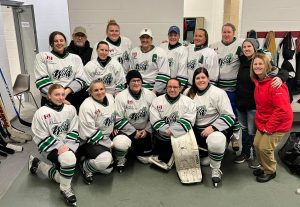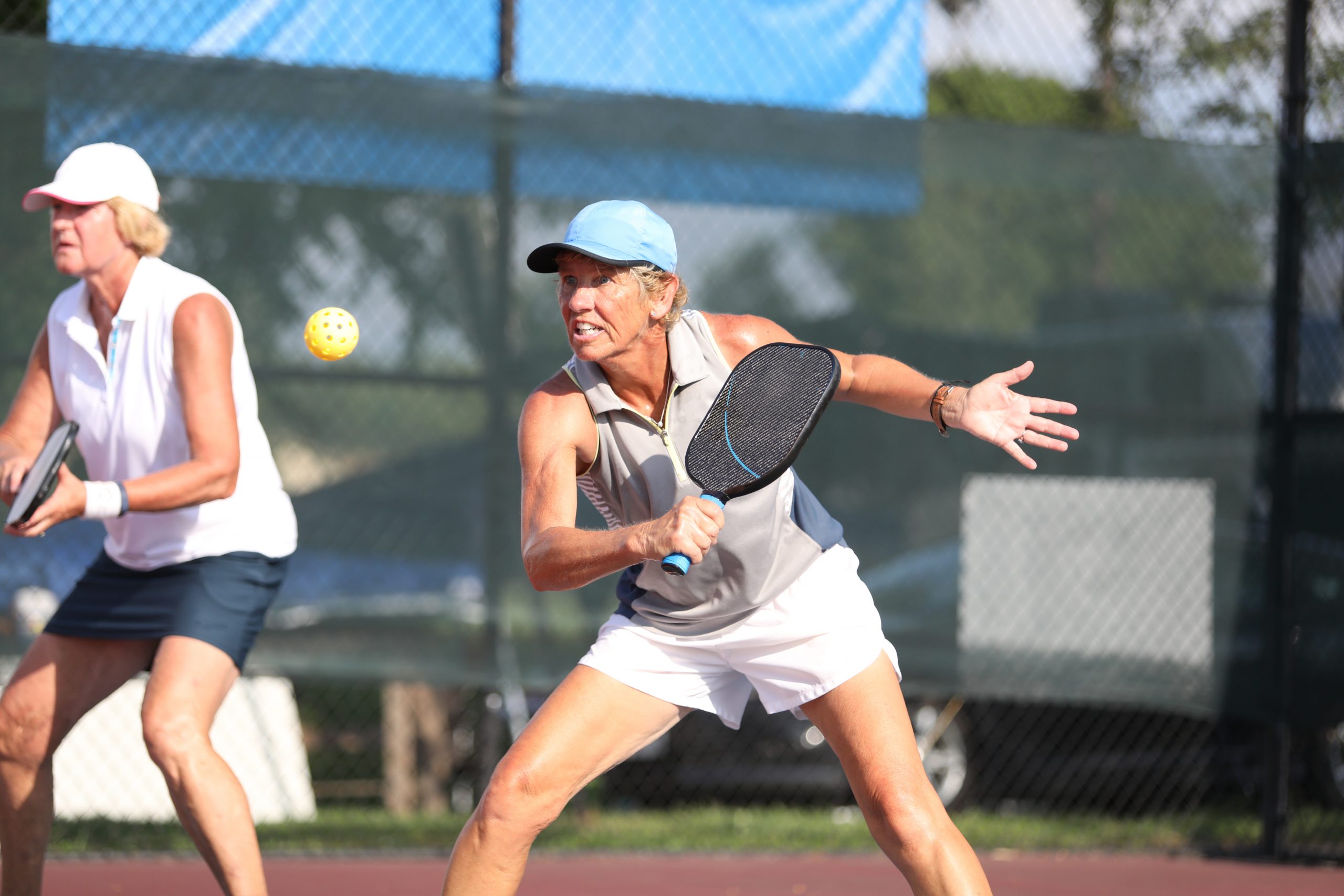6
Section One: The Fundamentals
A) Keywords
Exercise 1:
Provide a brief definition of one of the padlet keywords for this week.
|
In my opinion equity means fairness and everyone having what they need to have equal opportunity. Its making sure everyone has the same access to the same chances and support. I use equality and equity frequently in my life as I strongly believe in equity. The difference in the two terms is important to understand. I like equity over equality as equity takes into account different peoples needs and situations, while equality is treating everyone the same. By providing support and addressing individual/group needs, equity helps create opportunities and can reduce disparities.
|
B) The Social Significance of Aging in Sport
Exercise 2: Notebook Prompt
How is old age popularly represented today? Find an image online that you think exemplifies one defining attitude towards old age and paste in your notebook below with a brief explanation of what this image means to you.
Old age is, in my opinion, increasingly portrayed as a time of continuing activity, independence, and challenging traditional stereotypes of fragility and disengagement. For instance, the most of the players on my women’s league hockey team are over 60 (not that 60 is old age), and I even play with a woman who is 72 years old, and she consistently shows up to play. My team challenges the stereotype that older people are passive and weak, or uninterested in physical activities by showing that age is not a barrier to engaging in physically demanding, high-energy activities.
Exercise 3: Notebook Prompt
What does the article (referencing another study by Dionigi) mean by its statement that sport can help aging people to simultaneously “accept and resist the ageing process” (572)? Respond by audio or text and find paste two images sourced online into your notebook showing how sport might help aging people to both accept and resist the aging process.
| I think the statement reflects the dual role that sports play in the aging process. By maintaining physical health, adjusting to changing bodies, and accepting the inevitable process of age, participating in sports enables older people to embrace the realities of aging. Participating in sports also helps individuals to overcome the constraints that are frequently placed on them by stereotypes about aging. Older individuals challenge the idea that aging inevitably results in decline by engaging in physical activity. I have personally seen this on the hockey teams I play for! Most women on the team are 50+ years old, demonstrating that a person’s ability to engage in physical exercise and achieve personal goals is not influenced by their age.
Thus, sports offers a balance that allows older people to both accept the reality of aging—through self-awareness and adaptation—and confront the social constraints placed on their possibilities and skills as they age.

|
Exercise 4: Notebook Prompt
Who are the groups less likely to have extensive opportunities to take part in sports, according to Pike? How does privilege factor into aging and sport? (200 words max)
| According to Pike, it is less likely that older persons with physical disabilities, gendered expectations, or socioeconomic difficulties will have possibilities to participate in sports. Women frequently encounter obstacles such as limited resources, societal expectations about caregiving roles, and restricted access to sports programs, particularly those from lower socioeconomic backgrounds. Furthermore, physical obstacles may prevent older persons with disabilities or long-term medical conditions from participating in sports.
Privilege has a big impact on sport and aging because people with more social, financial, and cultural capital can access greater physical activity options. This advantage enables individuals to pay for memberships, take part in specialized programs, or get medical care that improves their capacity to play sports. Those without these advantages could find it difficult to maintain an active lifestyle as they get older due to a lack of facilities, coaching, or social support.
|
Exercise 5: Padlet Discussion
Why do you think age discrimination is “reported more than any form of prejudice” with older people presented as a threat to social values and interests? Feel welcome to use video in your responses. Paste your comments (or transcript of your video) below!
| Many cultures place a high emphasis on youth and associate aging with reliance and decline. Older people may be perceived as less productive and a strain on resources like healthcare and pensions, particularly if they are retired or no longer employed. These issues might become more prevalent as the population of older adults rises, which would raise prejudice and negative sentiments. Stereotypes resulting from this dread of aging restrict older people’s options in social and professional spheres.
|
B) Older Women and Sport
Exercise 6: Notebook Prompt
What differences do you see in these ads? Which one is more inclusive? How is age represented or not represented in each? Answer these questions in your notebook.
| Both advertisements depict age in various ways and are inclusive in different ways. The first advertisement is notable for its diversity in showing a wide variety of individuals with different body shapes, skills, and experiences. This helps the advertisement feel more relatable to a wide range of viewers. In order to emphasize the presence of younger generations alongside older people and expand the breadth of representation, it also includes children. Although it is more specifically focused on a particular gender dynamic, the second advertisement highlights the intergenerational relationship between women by a focus on moms and daughters. Although older adults are included in both advertisements, some may feel the first one to be more inclusive because it highlights the participation of people with all abilities and shows that anybody may participate, regardless of age or background.
|
Exercise 7: Notebook Prompt
In her article, “Assessing the sociology of sport: On age and ability,” Elizabeth Pike references a “trend towards a ‘feminisation of ageing’, with many women living longer than men” (573). Do you agree that aging has been “feminized” in this way? How? Answer these questions in your notebook.
| Aging has been “feminized” in the manner that Pike states, and I agree with that. In terms of demographic changes and societal attitudes, aging has become more closely linked to women as more of them outlive men. The increasing prominence of older women in the media and in society is indicative of this “feminization” of aging, although it frequently occurs in an environment that prioritizes caring responsibilities, which have historically been associated with women. Women are frequently portrayed as the major caregivers in families and communities, especially as they age, which reflects cultural expectations of emotional labor and caring. At the same time, industries are focusing on the health and beauty of older women by offering them items that help them look younger or deal with age-related issues. A limited perspective of aging is further highlighted by the fact that, in spite of these representations, older women are occasionally disregarded or excluded in leadership positions, sports, and politics. Therefore, the “feminization” of aging draws attention to the growing number of older women as well as the ways that aging is framed around traditional gender roles, which perpetuates some prejudices.
|
Section Three: Module Mini Assignment
| Pike (2015) claims that portrayals of elderly people frequently highlight both acceptance and opposition to the aging process. Pickleball, a sport that combines aspects of badminton, ping pong, and tennis, is less physically taxing than traditional sports while yet offering opportunities for competition, social interaction, and exercise has grown in popularity among older people. Due to this, it’s a popular choice for seniors who wish to maintain their level of activity without running the danger of being hurt playing more strenuous sports.
Pickleball debates as a “sport trend” do, however, also draw attention to some problems with the representation of seniors. Older pickleball players are frequently portrayed in the media and on social media as belonging to a lively, active society. Yet, these representations sometimes lean into ageist assumptions by depicting older adults as needing to engage in sports merely for health and longevity, rather than as active agents pursuing recreation and enjoyment. In order to avoid society responsibilities like healthcare expenses or dependence, older persons are under pressure to participate in these “healthy” activities because there is a focus on personal accountability for preserving health and fitness. The media, for instance, frequently highlights older pickleball players’ “determination” and “self-care,” portraying aging as something that can be “managed” with the correct lifestyle choices. Instead than tackling more general structural problems associated with aging populations, this is an example of a neoliberal strategy that promotes independence and individualism in the face of aging. Older pickleball players are sometimes depicted with young energy and subtitles that highlight how they “defy the odds” or “challenge aging.” The assumption that aging must be “managed” by remaining active and competitive is reinforced by these depictions, which may exclude people who are unable to participate in such activities even though they emphasize the vitality of older athletes. We can observe how these representations of elderly pickleball players mirror more general cultural discourses on aging, health, and responsibility. Although the sport presents a good image of aging, it can also serve to uphold neoliberal notions of personal autonomy and well-being in ways that ignore the difficulties that many seniors encounter.
|


